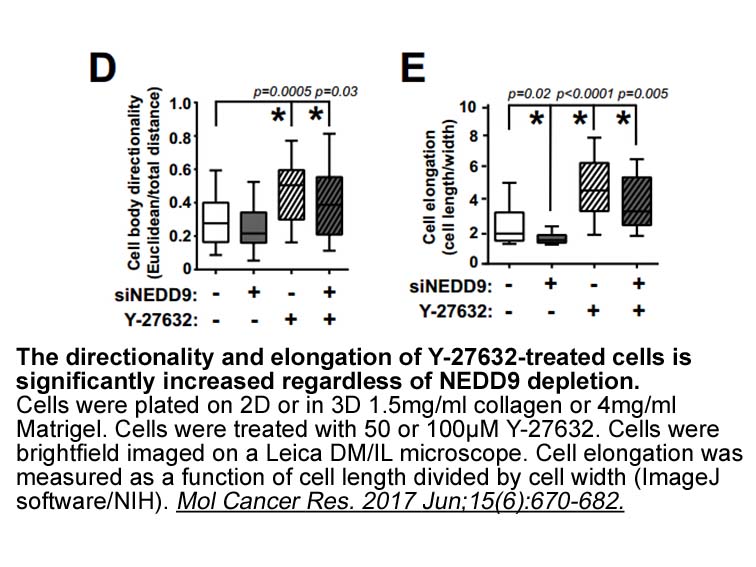Archives
br Introduction Excitatory pyramidal neurons are generated i
Introduction
Excitatory pyramidal neurons are generated in the cortical ventricular zone and migrate into the cortical plate alongside the radial glial processes (Chanas-Sacre et al., 2000, Hartfuss et al., 2001, Noctor et al., 2001, Rakic, 1972, Tan et al., 1998). Neuronal migration determines the positioning of developing neurons into cortical layers and is therefore important in generating lamina-specific neural circuits. Once neurons reach their destination, they further differentiate by creating extensive dendritic branching and forming spines to establish functional connectivity (Jan and Jan, 2010). Thus, correct positioning of neurons are critical determinants of neural circuit formation during brain development. Accordingly, problems in neuron migration during development cause brain malformations and are associated with a variety of neurological diseases such as mental retardation, autism, and schizophrenia (Gleeson and Walsh, 2000, Jan and Jan, 2010, Kaufmann and Moser, 2000, Wegiel et al., 2010). However, the molecular mechanisms of developing neuron migration are not fully understood.
Microtubule 1664 crosslinking factor 1 (MACF1) is a protein that belongs to the plakin family of cytoskeletal linker proteins (Fuchs and Karakesisoglou, 2001, Jefferson et al ., 2004, Kodama et al., 2003, Roper et al., 2002). The protein bridges microtubules and actins through its corresponding domains at N- and C-terminals. Mutations in shot, the Drosophila homolog of MACF1, induce abnormal neurite outgrowth and guidance (Gao et al., 1999, Jan and Jan, 2001, Kolodziej et al., 1995, Lee et al., 2000a, Lee and Luo, 1999, Prokop et al., 1998). However, the functions and mechanisms of MACF1 in neuronal differentiation in the developing mammalian brain have not been clearly determined. Interestingly, MACF1 is identified as a part of an interactome of DISC1, a schizophrenia and autism susceptibility factor (Camargo et al., 2007). In a separate study, MACF1 is shown to be associated with glycogen synthase kinase-3 (GSK-3) signaling (Wu et al., 2011). It is noted that DISC1 and GSK-3 bind to each other and coordinate neuronal migration in the developing brain (Ishizuka et al., 2011, Singh et al., 2010). Thus, these findings suggest a potential interplay among MACF1, GSK-3, and DISC1 in neuronal development. We hypothesize that MACF1 plays critical roles in neuronal migration in the developing brain by interacting with GSK-3 signaling and controlling microtubule stability.
Developing cortical and hippocampal neurons in mice actively migrate and differentiate between embryonic day 13 (E13) and 20. MACF1 null mice die before E11 (Chen et al., 2006), precluding the use of MACF1 null mice in the analysis of MACF1 in neuronal migration and further differentiation. To investigate the functions and mechanisms of MACF1 in neuronal development in vivo, we used conditional knockout strategies to target MACF1 specifically in developing neurons. Here, we show that MACF regulates pyramidal neuronal migration via microtubule dynamics and GSK-3 signaling in the developing brain. Our findings demonstrate the mechanisms of MACF1-regulated positioning of developing pyramidal neurons.
., 2004, Kodama et al., 2003, Roper et al., 2002). The protein bridges microtubules and actins through its corresponding domains at N- and C-terminals. Mutations in shot, the Drosophila homolog of MACF1, induce abnormal neurite outgrowth and guidance (Gao et al., 1999, Jan and Jan, 2001, Kolodziej et al., 1995, Lee et al., 2000a, Lee and Luo, 1999, Prokop et al., 1998). However, the functions and mechanisms of MACF1 in neuronal differentiation in the developing mammalian brain have not been clearly determined. Interestingly, MACF1 is identified as a part of an interactome of DISC1, a schizophrenia and autism susceptibility factor (Camargo et al., 2007). In a separate study, MACF1 is shown to be associated with glycogen synthase kinase-3 (GSK-3) signaling (Wu et al., 2011). It is noted that DISC1 and GSK-3 bind to each other and coordinate neuronal migration in the developing brain (Ishizuka et al., 2011, Singh et al., 2010). Thus, these findings suggest a potential interplay among MACF1, GSK-3, and DISC1 in neuronal development. We hypothesize that MACF1 plays critical roles in neuronal migration in the developing brain by interacting with GSK-3 signaling and controlling microtubule stability.
Developing cortical and hippocampal neurons in mice actively migrate and differentiate between embryonic day 13 (E13) and 20. MACF1 null mice die before E11 (Chen et al., 2006), precluding the use of MACF1 null mice in the analysis of MACF1 in neuronal migration and further differentiation. To investigate the functions and mechanisms of MACF1 in neuronal development in vivo, we used conditional knockout strategies to target MACF1 specifically in developing neurons. Here, we show that MACF regulates pyramidal neuronal migration via microtubule dynamics and GSK-3 signaling in the developing brain. Our findings demonstrate the mechanisms of MACF1-regulated positioning of developing pyramidal neurons.
Results
Discussion
Materials and methods
Author contributions
Acknowledgements
We are thankful to Drs. Klaus-Armin Nave (Max Planck Institute) and Dr. Elaine Fuchs for their generous gifts of Nex-cre mouse, and MACF1 plasmids and antibodies, respectively. We thank Drs. Robert Norgren, Anna Dunaevsky, and Shelley Smith for valuable advice and comments on the manuscript. We are also grateful to Raquel Telfer and Matt Latner for animal care. Research reported in this publication was supported by an Institutional Development Award (IDeA) from the National Institute of General Medical Sciences of the National Institutes of Health under grant number P20GM103471, a  grant from NE DHHS (Stem Cell 2012-05), and a grant from Alzheimer’s Association (NIRP-12-258440) to WYK.
grant from NE DHHS (Stem Cell 2012-05), and a grant from Alzheimer’s Association (NIRP-12-258440) to WYK.